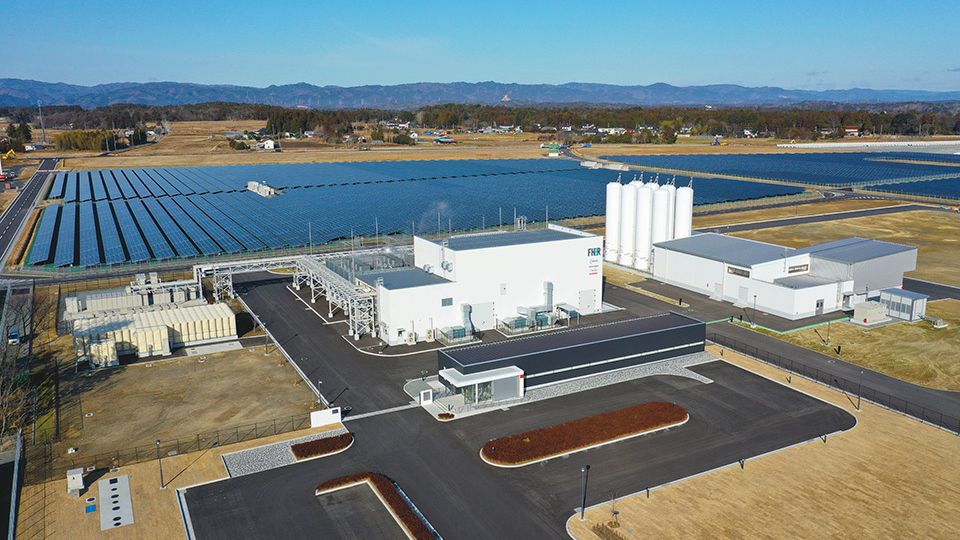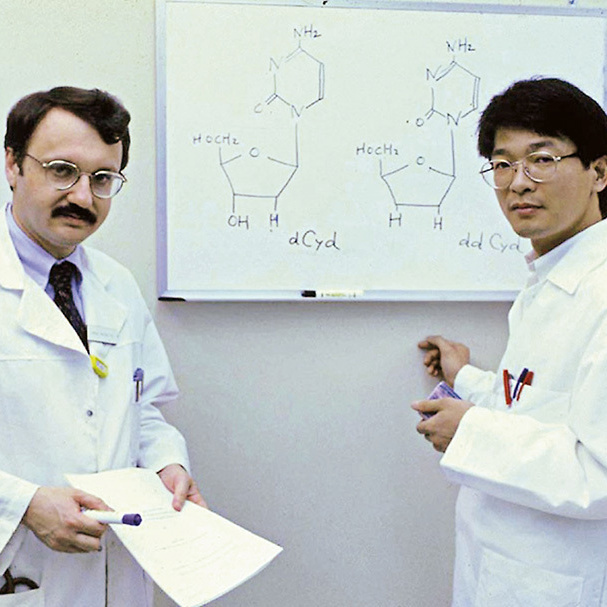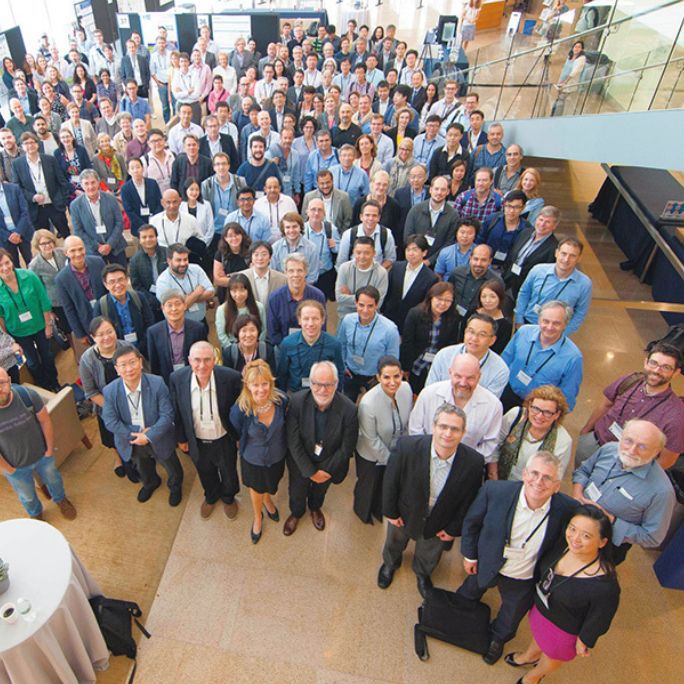The world is looking towards hydrogen as a next-generation clean energy source. In Japan, the Fukushima Hydrogen Energy Research Field was completed in March 2020. With the start-up of the world’s largest hydrogen production facility, a giant leap towards the realization of a hydrogen society has been made.
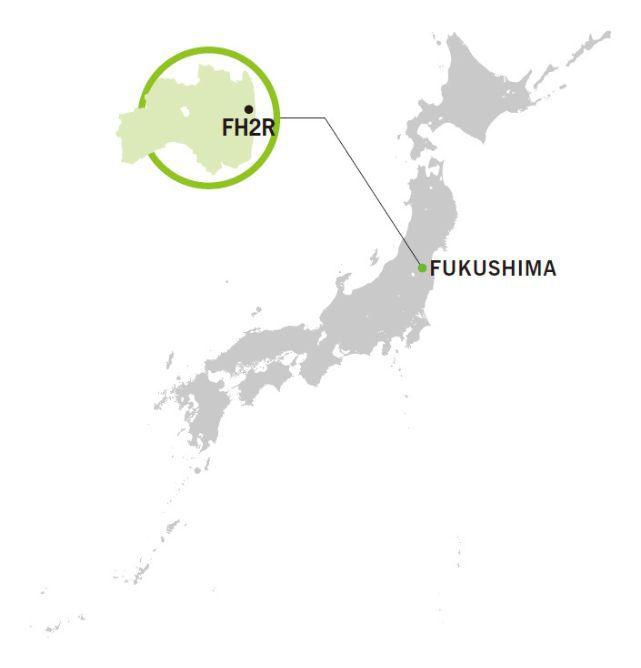
Hydrogen, unlike petroleum or coal, produces no carbon dioxide when used. It can also be produced from a variety of resources, allowing renewable energy sources, such as solar, wind, and biomass, to be used. Thus, the entire process, from production to utilization, can be nearly carbon-free, which is indispensable for achieving the Sustainable Development Goals (SDGs) of climate action and affordable and clean energy.
Amid calls for a global conversion to clean energy, Japan is leading the world by applying its technological strengths, such as introducing the world’s first commercially viable fuel-cell vehicle (FCV), moving forward to the realization of a hydrogen-fueled society. Japan is also showing leadership in other ways, such as through the action plan known as the Basic Hydrogen Strategy, established in 2017, and by hosting the Hydrogen Energy Ministerial Meeting, which in 2018 was the world’s first cabinet-level discussion devoted to the issue.
In those efforts, a vital role is played by the Fukushima Hydrogen Energy Research Field (FH2R), completed in March 2020. Equipped with a 10,000kW class hydrogen production facility, the plant is producing hydrogen by utilizing electricity generated from solar panels arrayed around its perimeter. Enough hydrogen fuel can be produced at the facility every day to supply power for about 150 households (monthly consumption), or to fill 560 FCVs.
Achieving a hydrogen society requires promoting the total integration of the making, storing, and using of hydrogen. A particularly critical issue is responding to fluctuations in electrical power when the hydrogen is made from renewable energy sources that vary according to the weather and other factors. FH2R uses information from a hydrogen demand-and-supply forecasting system for predicting the market demand for hydrogen, and additional data from a power grid control system, so as to maximize the use of electricity from renewable sources. The goal is to develop the most efficient hydrogen energy management system.
Compared to conventional energy, hydrogen offers new possibilities for storing and transporting energy, necessitating the development of appropriate methods. Accordingly, based on an understanding of hydrogen’s properties as a fuel, verification of the safest management and transportation methods is being carried out. The operation of FH2R, where verification tests can be run on the entire process—from making to storing—is a giant leap towards realizing a hydrogen society.
In Japan, the stage of using hydrogen began prior to the stage of making and storing. Iconic examples are the Ene-Farm fuel-cell (for residential use), Mirai (the world’s first fuel-cell vehicle), and the introduction of fuel-cell buses on Tokyo’s metropolitan bus lines and elsewhere. Moreover, the Olympic Village area in Tokyo will be furnished with a hydrogen station, a hydrogen pipeline, and pure hydrogen fuel cells. When the Olympic and Paralympic Games Tokyo 2020 finally end, the area will be designated for residential and commercial use, and will utilize the electricity generated from these facilities. Buses and automobiles equipped with hydrogen fuel cells are being introduced as a legacy of the Tokyo 2020 Games, enabling Tokyo to be a model of an environmentally-advanced city transitioning towards a carbon-free society.
Hydrogen, a clean fuel that can be stored and transported, provides flexibility and new possibilities to society beyond what was previously available with conventional energy sources. With humanity facing so many problems in need of solutions, great hopes are being placed on the switch to hydrogen.
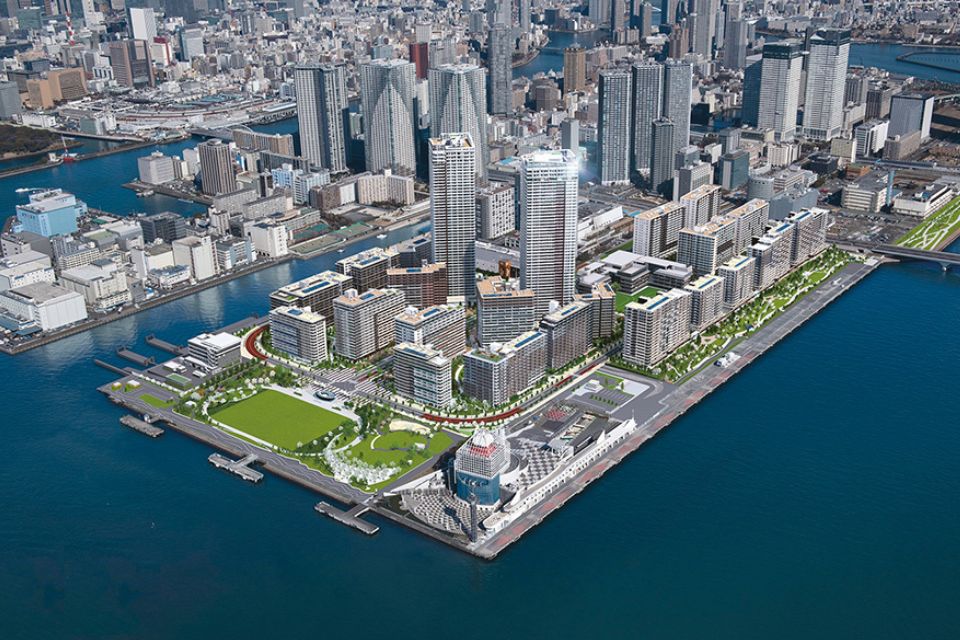
The Olympic Village area for the Tokyo 2020 Games is designed as a model of advanced urban planning, utilizing hydrogen fuel.
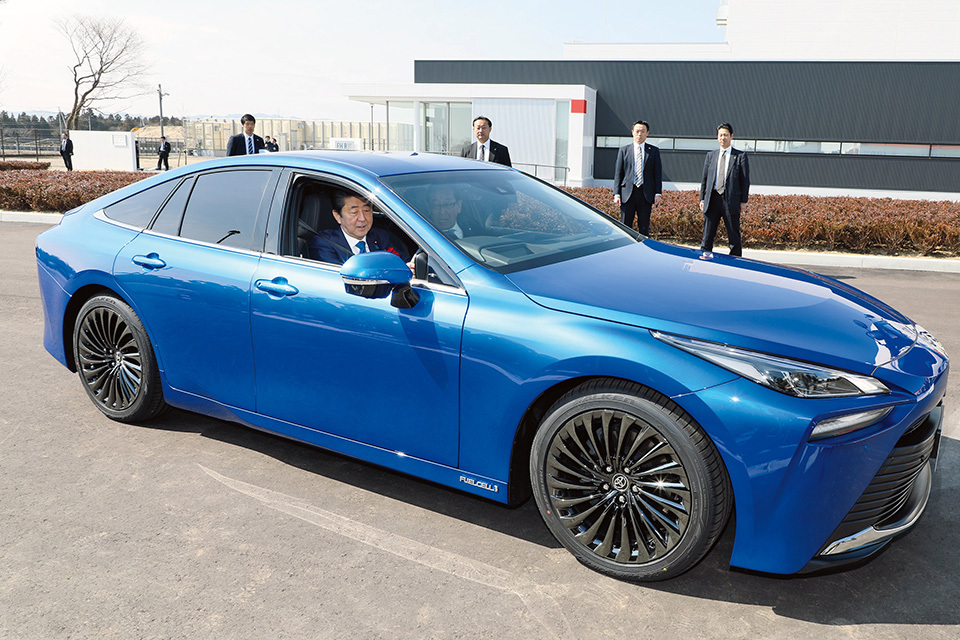
At the FH2R opening ceremony, Prime Minister Abe took a test ride in an FCV. When automobiles fueled by hydrogen generated by renewable energy become more widespread, it will contribute greatly to reducing CO2 emissions.
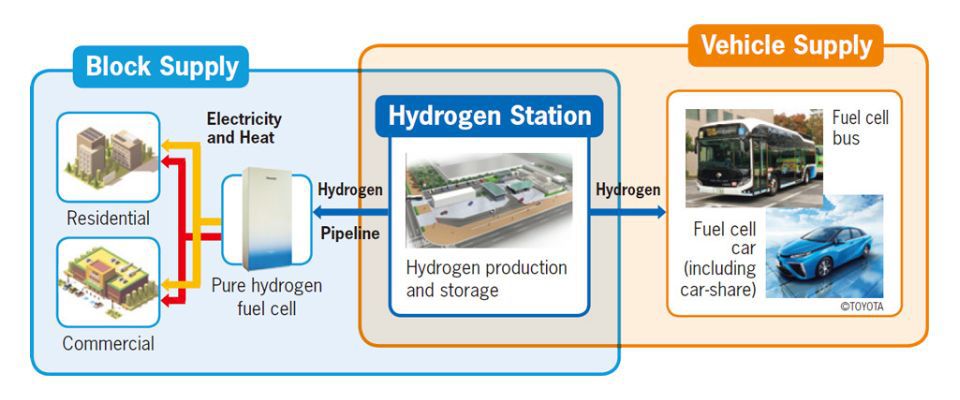
Utilization of hydrogen in the Olympic Village area. Not only is the hydrogen supplied from a hydrogen station used as bus and automobile fuel, but plans also include broadening the extent of practical applications for utilization in residential and commercial facilities.


























